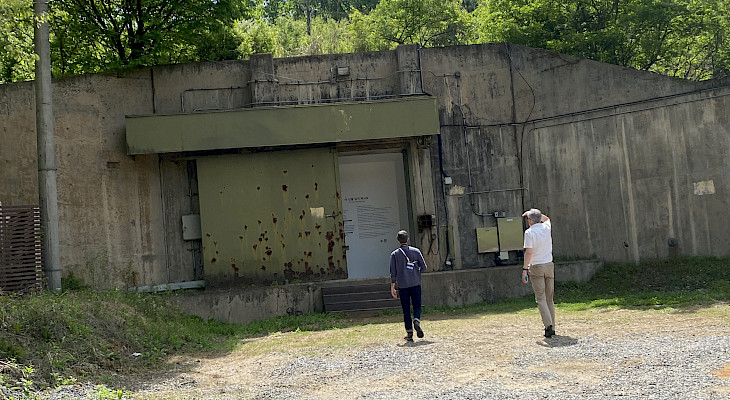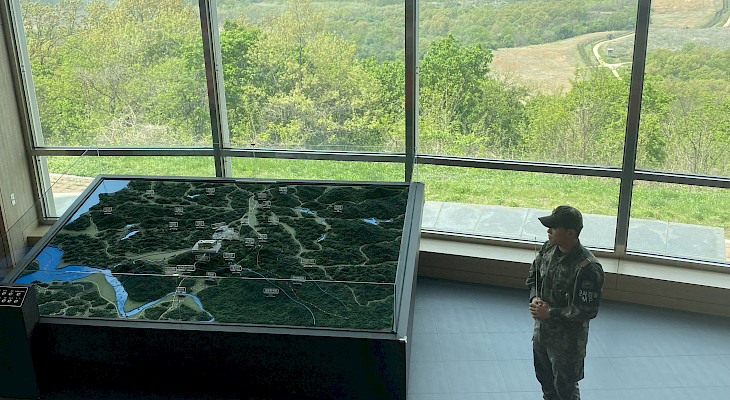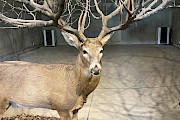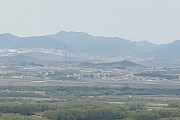It is possible that even clairvoyant predictors of the future could not have foreseen that the temporary division of Korea in 1953 along a line almost coinciding with the 38th parallel would remain unchanged for more than 70 years. To the north of this line, one system of government was established, while to the south, a completely different one, where the life of ordinary Koreans became an unattainable dream for the residents of the northern part of the Korean peninsula.
The Koreans themselves are not to blame for the fact that the once unified territory of Korea was ruthlessly divided, and the population forcibly separated from each other. This is the result of the world order established after the end of World War II, when the northern part of the peninsula was liberated from Japanese occupation by the army of one coalition, led at that time by the USSR, and the southern part was liberated by the army of another coalition, led by the USA.
The ideological disagreement between these two liberators of Korea led to armed clashes between supporters and opponents of these two armies among Koreans until 1953, which resulted in the creation of two administrations. Later, they became independent states with different political systems. While the South Koreans chose a democratic path of development with equal opportunities for all citizens and openness to the world, in the North, communist ideology prevailed, which later led to the country's isolation and the imposition of totalitarian state control.
The difference in approaches towards their societies is particularly evident in the organization of access to the Demilitarized Zone, the so-called DMZ. Access from the southern part of the peninsula is quite open, though with some strict conditions, such as the mandatory possession of a passport and inclusion on a list of those permitted to enter the zone. Meanwhile, in the northern part of the peninsula, access to the DMZ is highly restricted for ordinary citizens and especially for foreigners.
Participants of the 24th World Journalists Conference, organized for the 12th time by the Journalists Association of Korea, were given the opportunity to delve into the history and familiarize themselves with the events of 71 years ago.
The dividing line between North and South Korea includes a 4 km strip – 2 kilometers on each side – considered neutral and inaccessible to anyone. There are only a few checkpoints through which transport can pass. It was at one of these checkpoints that the historic meeting between the leaders of the two Koreas took place in 2018, when North Korean leader Kim Jong Un and South Korean President Moon Jae-in held the first-ever talks in the DMZ.

However, due to significant changes in the world caused by important international events in recent years, the relations between the two countries have once again become tense. The situation at the border is very complex, and not everyone in the world understands the real reasons for the escalation. Delving into the history of bilateral relations at this point can significantly unveil to journalists the veil that is little known in the world.
In 1953, after fierce armed conflict involving both American and Chinese-Soviet troops, a state of armistice was reached. The warring forces occupied the territory and positions where the two independent states are now located.
The Korean Armistice Agreement, also known as the Panmunjom Armistice, signed on July 27, 1953, ended the hostilities of the Korean War. On behalf of the UN forces, the document was signed by US Army Lieutenant General William Harrison, on behalf of the Korean People's Army and Chinese People's Volunteers by North Korean General Nam Il. The South Korean representative, General Choi Duk Shin, attended the signing ceremony but refused to sign the agreement. The agreement established a demilitarized zone 2 km on each side of the existing front line, led to a ceasefire, and set conditions for the return of prisoners of war. The demilitarized zone, with few exceptions, became an uninhabited neutral strip, forming the de facto border between the two Koreas.
In January 2010, North Korean authorities stated that they wanted to hold talks with the US to conclude a peace treaty to replace the armistice agreement that ended the Korean War. As a result of escalating tensions between North and South Korea, on March 5, 2013, North Korea announced the possibility of terminating the armistice, and on March 8 of that year, annulled the 1991 non-aggression agreement with South Korea. North Korea declared its withdrawal from the armistice on March 13, 2013.
Unfortunately, the slight warming of relations in 2018 ended in 2022, and since then, the sides' relations have only become more complicated.
From a building on a hill in the DMZ zone, the dividing line between the two countries is clearly visible. This line winds across the peninsula and nearly coincides with the 38th parallel. Through binoculars installed on a special platform, DMZ visitors can clearly see the other side of the border, where the so-called model village of North Koreans is located. On the surface, it looks like an ordinary town, with factory chimneys, multi-story buildings, and streets. However, no signs of bustling life or labor activities of the population have been observed.

According to the guides, it was built specifically to showcase the successes of the northern peninsula's residents. "Pure propaganda," they claim. As a striking contrast, just hundreds of meters from the two-kilometer strip, South Koreans have erected a flagpole with the South Korean national flag, and around this area, signs of agricultural work are everywhere—cultivated fields, roads with vehicles, and clearly visible signs in Korean. Along the roads approaching the border or the sea, there are fences with barbed wire and warning signs. In short, the contrast is striking. Despite the zone being practically difficult to visit, it is clear that the local residents do not suffer from this at all.
Inside the three-story building on the hill, from which the neighboring country's territory is clearly visible, there is a model of the area, and a military guide explains in detail both the history of the relationship and the current state at the border.

The authorities have preserved buildings, forms, and copies of documents from the times of the war and the signing of the Armistice Agreement in 1953. There is a meticulously compiled list of volunteers who participated in that war and heroically died for the freedom of the country, many of whom were students who voluntarily went to fight.

Some distance from the main observation platform at the DMZ, conference participants were shown the location of American troops who assisted the South Korean army. Garrison buildings for soldiers, bunkers for storing uniforms and food, and parade grounds are specially arranged to preserve the spirit of that time, with every detail speaking for itself.
It is evident that the South Koreans remember their history and want the younger generation to also retain the memory of those historical events and the people who fought for the future of the young generation.

In one of the bunkers, a dummy deer with huge antlers, growing high and turning into a multi-branched tree, was installed. This symbolizes the connection of generations who worship the mother deer, with the history of this land and the future of the entire country, closely resembling the Kyrgyz people, who also worship the mother deer, considered the protector of the people.
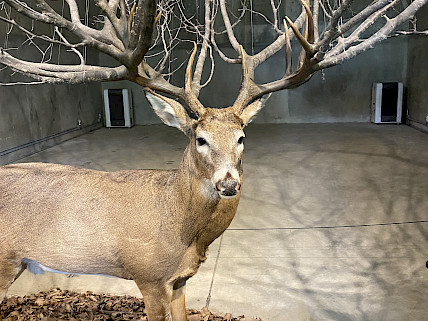
One of the most memorable moments of visiting the DMZ, and at the same time reinforcing hope for the unified future of this country, was the bunker where a light show was presented. It depicted the past, present, and future of this place with allegorical video sequences.

The success of South Korea is connected with the titanic labor of its people, whose unwavering desire remains the unification of the country and the peaceful development of the entire nation towards prosperity.
Kuban Abdyment,
Seoul-DMZ, Korea





